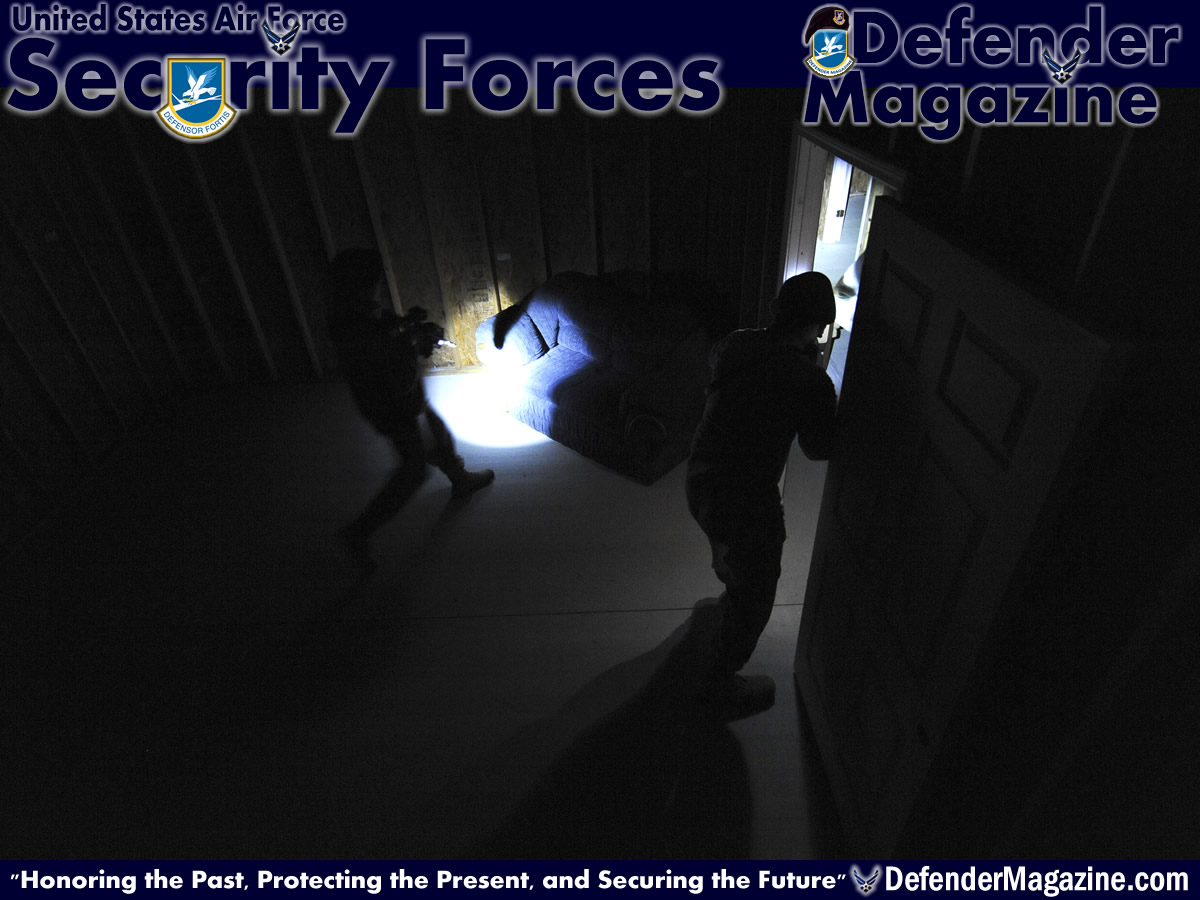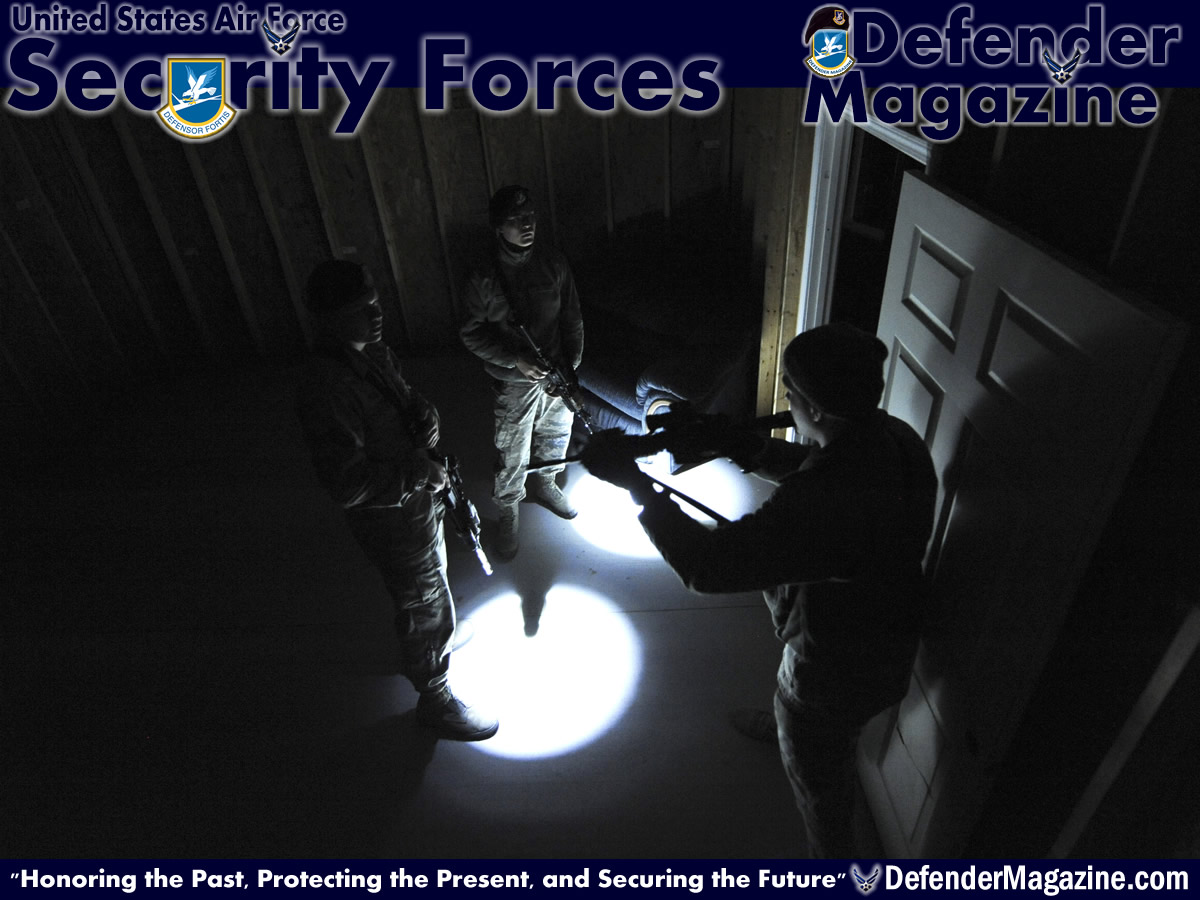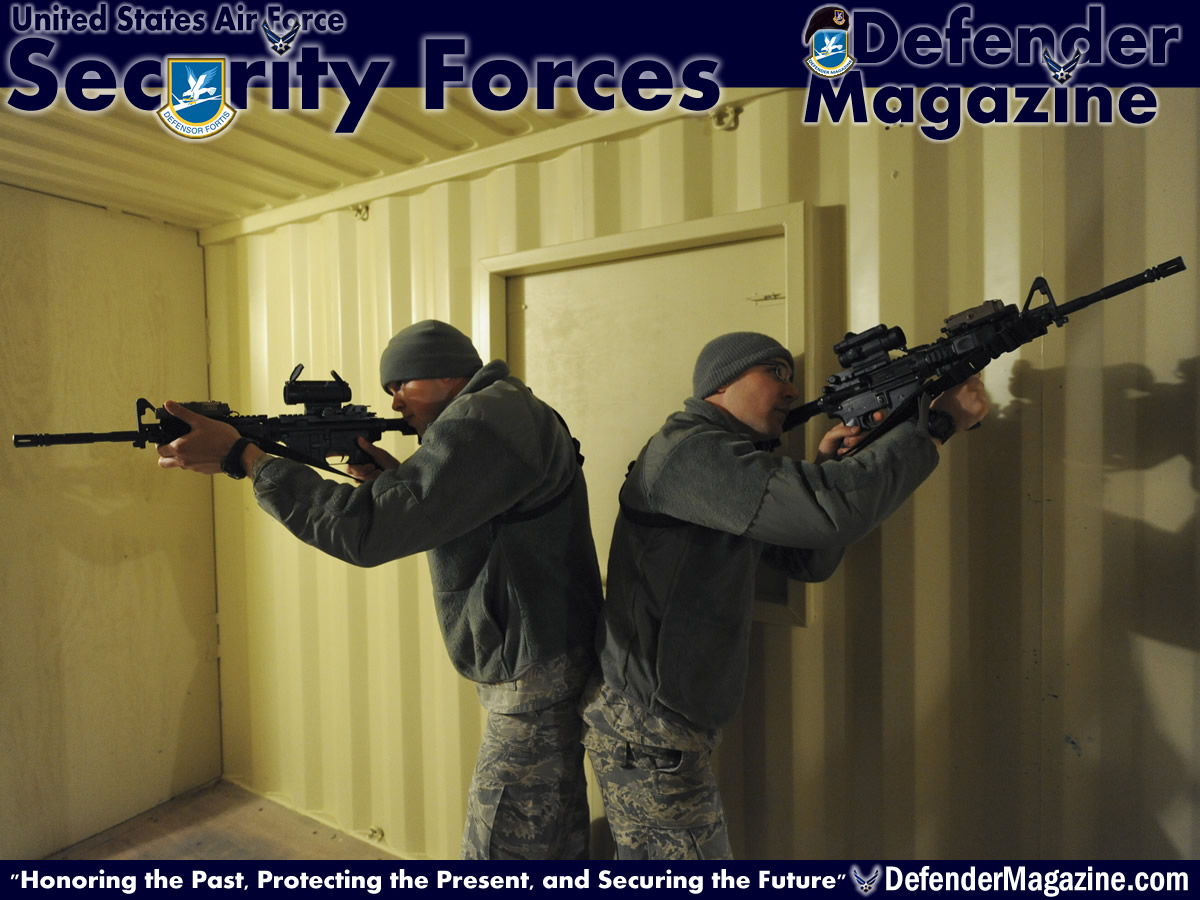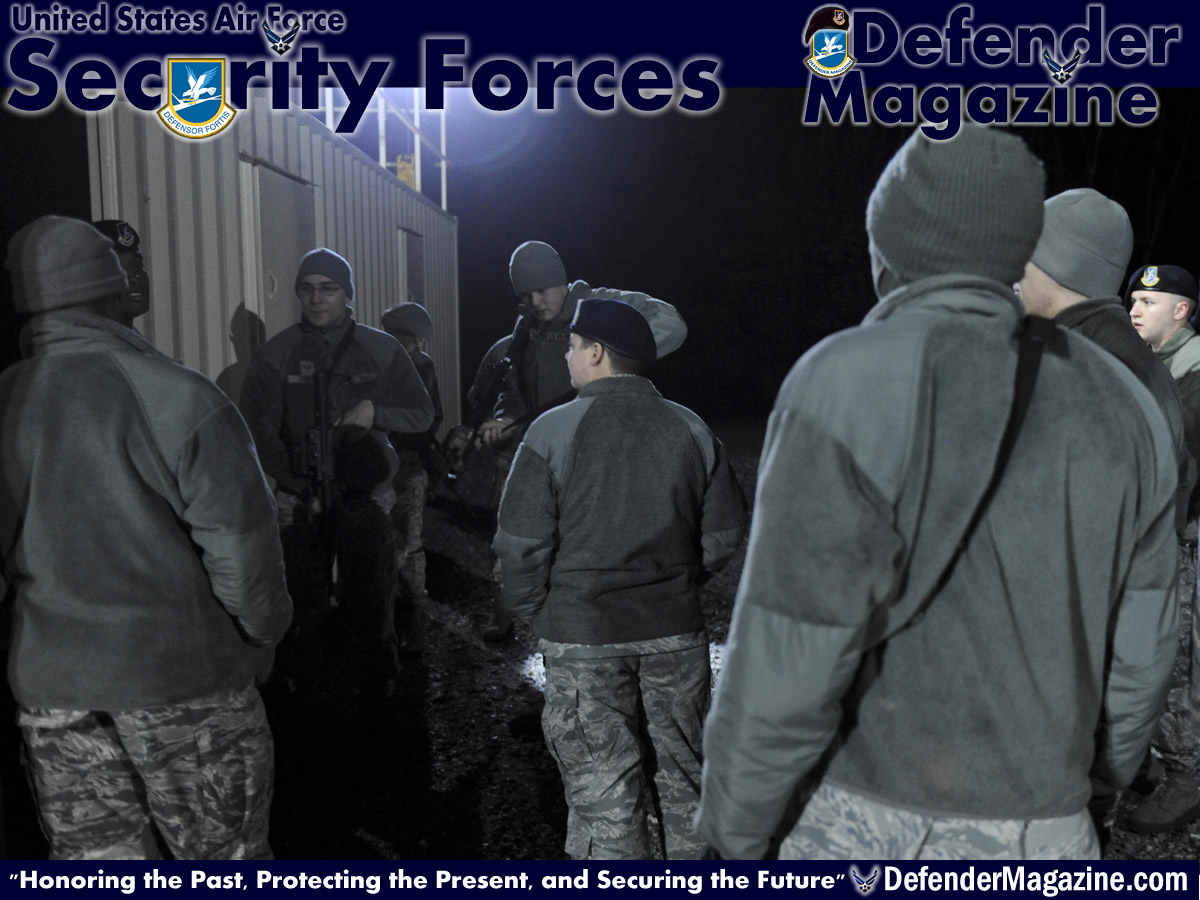3/5/2015 – SEYMOUR JOHNSON AIR FORCE BASE, N.C. — The Air Force has put a premium on innovation symbolized by the “Airmen Powered by Innovation” initiative.
The 4th Security Forces Squadron took that idea seriously and pioneered the first fully functional range training complex in Air Combat Command – now the standard by which security forces training is measured.
Andy Anderson, 4th SFS lead security forces instructor, said he noticed a need for an improved training environment and set out to revolutionize training for the 4th SFS Airmen.
“We used to train in our squadron building,” Anderson said. “It just wasn’t realistic training. We wanted the Airmen to be able to deal with a threat in training like they would in the real world. That’s why we decided to build a facility specifically for training.”
In 2013, Anderson used the squadron’s end-of-year funds to build the shoot house, the first stage of the evolving range complex.
Anderson surveyed the land and members of the 4th Civil Engineer Squadron’s heavy equipment shop leveled the ground and laid the gravel. Then, Anderson drafted the blueprints and built the shoot house by hand over the next year.
“I spent a minimum of three days a week, both on and off duty, to get the range functional,” Anderson said. “I cut the wood, built the frames and drove the nails. Aside from squadron support putting up the walls, I did everything myself. A lot of my sweat and time went into that building.”
Its features set the stage for a more accurate training environment that now allows Airmen to respond to numerous scenarios in the same manner they would respond in real life.
“Any building they might have to go into can be duplicated there: long hallways like the commissary, base Exchange or med group (4th Medical Group); and stairwells for the 4th Mission Support Group and 4th Fighter Wing Headquarters,” Anderson said. “We can’t just go up to the wing commander’s office and bust his door in during an exercise, but our training facility allows us to practice that and any other scenario we can think of.”
Col. Erik Rundquist, Headquarters ACC director of security forces, visited the 4th SFS in 2014. According to Anderson, Rundquist was impressed with the potential of the squadron-built training facility.
“When Colonel Rundquist saw our training facility, he took all my drawings, pictures and plans, compiled everything and sent it to every other ACC base, so they could benchmark off of us,” Anderson said. “He has completely bought in to the effectiveness of our range facility. It started here, just for us to improve our training, and it’s taken off. Hopefully we’ll see the plans that we pioneered here fully implemented throughout the rest of Air Combat Command.”
The wood-framed building features a breaching door, inspector catwalk and a movable wall system that changes the interior layout to fit training requirements.
Recently, the range expanded to include two metal, sea-land container buildings, which feature two-story construction, interior stairwells and balconies. According to Anderson, the new buildings have improved training by simulating the conditions defenders could face on Seymour Johnson AFB at any time.
Also included in the facility is an ammunition issue point capable of issuing weapons and ammo, and a shoot-move-communicate range, which allows Airmen to practice tactical movements, providing cover and advancing.
Good training requires instruction and evaluation, Anderson said. Plans are currently underway to mount 36 closed-circuit cameras throughout the facility. The unit also has several helmet-mounted cameras to record the defender’s point of view as events unfold. Instructors will watch live feeds from all angles of the training in a classroom projected for completion in the fall of 2015, and debrief the defenders about errors and competencies.
Anderson stated realism is also a key component of effective training. To increase realism, instructors dress in costumes, a public address system plays sound tracks tailored to the training scenario, and simulated gunfire mimics the thick of battle. Simply changing the costumes and sounds played changes the perceived location to one of multiple foreign or domestic locales.
Currently, the 6-acre facility accommodates monthly training for all security forces members and is open for small unit training any time of the day or night.
“Before, all we had was classroom training and nobody liked it,” Anderson said. “Now, when we go out to the training facility, sometimes I need to tell them to leave. They want to be there.”
Senior Airman Daniel Shores, 4th SFS patrolman, said training is much more beneficial since the facility was built.
“I can’t even remember what training was like before the shoot house,” Shores said. “I have always felt confident doing my job protecting this base and its assets, but now I feel a lot more proficient. It’s fun to get out there and clear houses and run through scenarios in a realistic environment.”
The training facility also accommodates 4th CES explosive ordnance disposal members, and has drawn the interest of several local law enforcement agencies. Anderson said organizations as far away as Raleigh and Wake Forest, North Carolina have expressed interest in training with 4th SFS Airmen.
“It’s improved our training 200-fold,” Anderson said. “We’re not looking back, we’re looking forward.”
by Airman 1st Class Aaron J. Jenne
4th Fighter Wing Public Affairs
Airman 1st Class Michael Stoner (left) and Senior Airman Andrew Quarrella, 4th Security Forces Squadron patrolmen, provide cover for advancing defenders during a monthly training session Feb. 11, 2015, at the range training complex on Seymour Johnson Air Force Base, North Carolina. The squadron pioneered the first fully functional range training complex in Air Combat Command. (U.S. Air Force photo/Airman 1st Class Aaron J. Jenne)
Airmen assigned to the 4th Security Forces Squadron receive instruction before breaching and clearing a building during monthly training Feb. 11, 2015, at the range training complex on Seymour Johnson Air Force Base, North Carolina. The facilities offer a realistic environment for 4th SFS patrolmen and 4th Civil Engineer Squadron explosive ordnance disposal members to train. (U.S. Air Force photo/Airman 1st Class Aaron J. Jenne)
Airmen assigned to the 4th Security Forces Squadron clear a building during monthly training Feb. 11, 2015, at the range training complex on Seymour Johnson Air Force Base, North Carolina. The wooden shoot house features a movable wall system, which allows the interior layout to be changed to vary clearing strategies and improve their skills. (U.S. Air Force photo/Airman 1st Class Aaron J. Jenne)
Airmen assigned to the 4th Security Forces Squadron learn building clearing techniques during monthly training Feb. 11, 2015, at the range training complex on Seymour Johnson Air Force Base, North Carolina. Plans are currently underway to construct a classroom and install 36 closed-circuit cameras throughout the facility allowing instructors to better evaluate and debrief their Airmen. (U.S. Air Force photo/Airman 1st Class Aaron J. Jenne)
Senior Airmen Willie Gibson (left) and Donald Suver, 4th Security Forces Squadron patrolmen, cover a doorway and stairwell respectively, while clearing a building during monthly training Feb. 11, 2015, at the range training complex on Seymour Johnson Air Force Base, North Carolina. The training facility includes three buildings with interior stairwells, balconies and observation catwalks. (U.S. Air Force photo/Airman 1st Class Aaron J. Jenne)
Airmen assigned to the 4th Security Forces Squadron receive instructions during monthly training Feb. 11, 2015, at the range training complex on Seymour Johnson Air Force Base, North Carolina. The facility currently houses three buildings, a shoot-move-communicate range and an ammunition issue point. (U.S. Air Force photo/Airman 1st Class Aaron J. Jenne)






